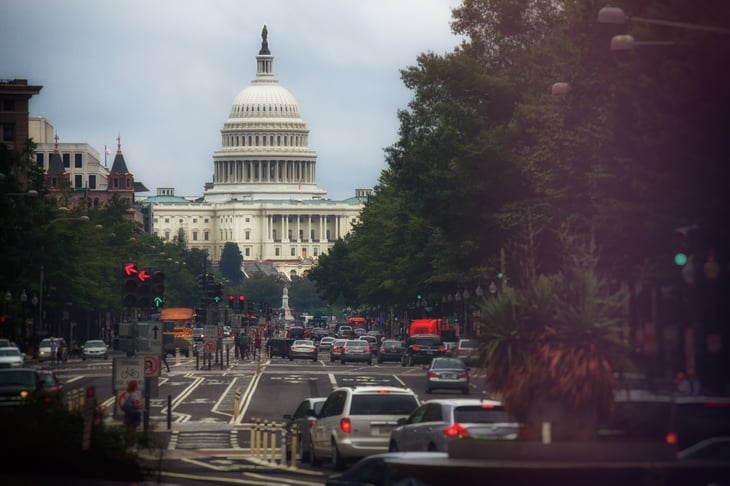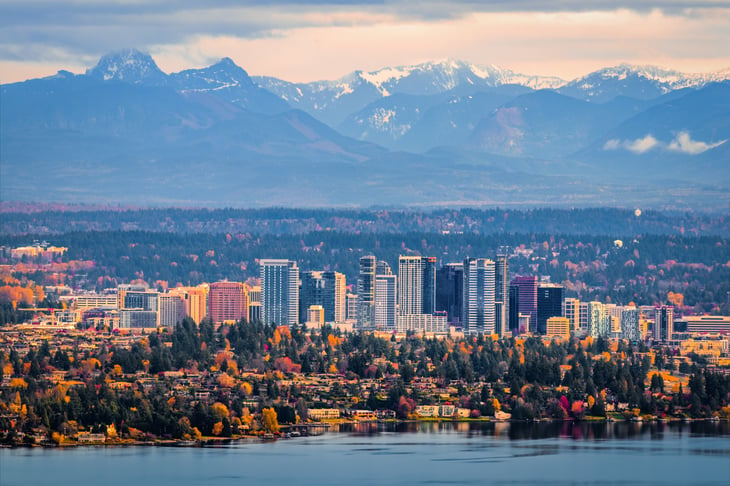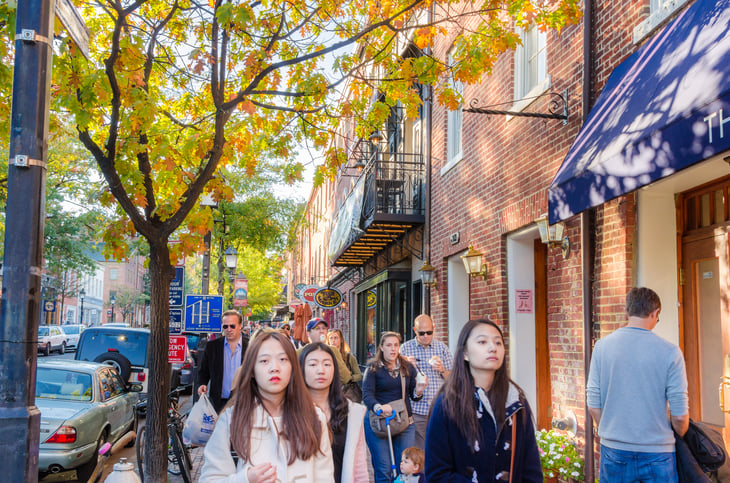
Need to find your own health insurance coverage? If you don’t have the luxury of getting this benefit from your employer, then you know it’s a headache to pin down the right plan — one that meets your health needs, those of your family and — critically — your budget. (You should also know that open enrollment for 2019 starts on Nov. 1.)
Under the Affordable Care Act, or Obamacare, the federal government expanded access to health insurance options for people who don’t receive it through an employer.
Getting insurance through the federal marketplace can be confusing to navigate, and rates are generally rising — increasing 32 percent on average nationally from 2017 to 2018, according to a recent study by the nonprofit Urban Institute. But the picture varies wildly from state to state. In Iowa — home to the highest increase — premiums shot up 117 percent in that period, while in Alaska premiums declined by more than 22 percent.
The volatility is partly the result of Trump administration moves that killed key provisions of Obamacare, which came after an unsuccessful attempt by Republican legislators to kill the health care law altogether — and also by how individual states chose to respond. Lawmakers continue to do battle over Obamacare, so more change is inevitable.
In the meantime, this is what it looks like for consumers in each state and the District of Columbia. Here are what it costs, on average, for an individual to buy health insurance in every state and D.C. in 2018, and how it changed from 2017 — from least expensive to most expensive:
1. Rhode Island: $287/month*

2017: $243/month*
2018: $287/month*
Change from 2017 to 2018: +18.3 percent*
Even with an 18.3 percent increase in premium costs over 2017, Rhode Islanders were offered the lowest monthly premium on average for health insurance purchased through the Obamacare marketplace in 2018.
*Costs cited throughout refer to the average lowest-premium Silver plans for a 40-year-old nonsmoker. Gold and Bronze plan premiums may go up and down in price at different rates, as the Urban Institute report shows. The Bronze, Silver, Gold and Platinum categories are based on how you and your insurance plan split costs. Categories have nothing to do with quality of care.
2. North Dakota: $293/month

2017: $325/month
2018: $293/month
Change: -9.8 percent
North Dakota is one of the few states where there has been a steady increase in residents enrolling in Obamacare policies each year since the law was rolled out in 2014, according to HealthInsurance.org. As more have enrolled, premiums dropped nearly 10 percent from 2017 to 2018.
3. Massachusetts: $306/month

2017: $241/month
2018: $306/month
Change: +26.8 percent
The Obamacare tax penalty designed to encourage people to get health insurance will go away in 2019, which means individuals — especially young, healthy individuals — may be less inclined to enroll in the federal program. But Massachusetts has had a health insurance requirement since 2006 and that law will remain in effect, “meaning that most state residents must have health insurance or face a state tax penalty,” says LegalConsumer.com. This state, a frontrunner in health care reform, saw an increase of nearly 27 percent in the average premium from 2017 to 2018.
4. District of Columbia: $317/month

2017: $275/month
2018: $317/month
Change: +15.0 percent
5. Washington: $326/month

2017: $238/month
2018: $326/month
Change: +37.0 percent
Washington state saw a big jump in premiums for private health insurance sold through the state’s marketplace in 2017. The Seattle Times reported that another substantial increase was on the way for 2019.
6. Indiana: $332/month

2017: $261/month
2018: $332/month
Change: +26.9 percent
7. Arkansas: $341/month

2017: $281/month
2018: $341/month
Change: +21.2 percent
8. Ohio: $347/month

2017: $251/month
2018: $347/month
Change: +38.2 percent
9. Michigan: $349/month

2017: $260/month
2018: $349/month
Change: +34.0 percent
Michigan residents saw a dramatic increase in premiums on the health care exchange in 2018, but they can expect an average increase there of just 1.4 percent in 2019, according to a report by the Associated Press. The AP analysis of data on proposed or approved premiums for 2019 indicated that many state health insurance marketplaces are stabilizing:
For next year, “premiums are expected either to drop or increase by less than 10 percent in 41 states with about 9 million customers.
10. Minnesota: $365/month

2017: $429/month
2018: $365/month
Change: -15.1 percent
Minnesota saw a significant decrease in premiums for plans on the state’s health care exchange in 2018 after a new reinsurance program was created. For 2019, all of the private insurance companies on the exchange have proposed lower premiums, according to HealthInsurance.org.
11. California: $394/month

2017: $317/month
2018: $394/month
Change: +24.1 percent
12. Texas: $394/month

2017: $279/month
2018: $394/month
Change: +41.3 percent
13. New Jersey: $399/month

2017: $338/month
2018: $399/month
Change: +18.1 percent
14. Oregon: $410/month

2017: $311/month
2018: $410/month
Change: +31.9 percent
15. Colorado: $413/month

2017: $317/month
2018: $413/month
Change: +30.2 percent
After witnessing a spike in health insurance premiums in 2018, Coloradans purchasing coverage on the state’s exchange are in for a more modest increase in 2019 of less than 6 percent, The Denver Post reported.
16. New Mexico: $414/month

2017: $239/month
2018: $414/month
Change: +73.4 percent
New Mexico’s rates jumped a whopping 73 percent in 2018, although they still remained below the national average of $444 per month. Residents of the Land of Enchantment can breathe easier this time around. Rates are expected to decline in the state in 2019.
17. Kentucky: $420/month

2017: $253/month
2018: $420/month
Change: +66.2 percent
18. Maryland: $436/month

2017: $324/month
2018: $436/month
Change: +34.7 percent
19. Hawaii: $437/month

2017: $325/month
2018: $437/month
Change: +34.4 percent
20. Nevada: $445/month

2017: $306/month
2018: $445/month
Change: +45.6 percent
Premiums on Nevada’s health insurance exchange almost matched the national average ($444) in 2018.
21. Pennsylvania: $453/month

2017: $347/month
2018: $453/month
Change: +30.6 percent
22. Louisiana: $455/month

2017: $403/month
2018: $455/month
Change: +12.9 percent
23. New Hampshire: $457/month

2017: $266/month
2018: $457/month
Change: +71.9 percent
24. Florida: $458/month

2017: $323/month
2018: $458/month
Change: +41.8 percent
25. South Dakota: $467/month

2017: $430/month
2018: $467/month
Change: +8.6 percent
26. Illinois: $474/month

2017: $350/month
2018: $474/month
Change: +35.3 percent
27. Vermont: $474/month

2017: $470/month
2018: $474/month
Change: +0.8 percent
28. Idaho: $475/month

2017: $344/month
2018: $475/month
Change: +37.9 percent
29. Mississippi: $478/month

2017: $327/month
2018: $478/month
Change: +46.5 percent
30. Kansas: $481/month

2017: $362/month
2018: $481/month
Change: +32.8 percent
31. Georgia: $482/month

2017: $312/month
2018: $482/month
Change: +54.7 percent
32. New York: $484/month

2017: $439/month
2018: $484/month
Change: +10.3 percent
33. Arizona: $487/month

2017: $497/month
2018: $487/month
Change: -2.0 percent
34. Missouri: $487/month

2017: $365/month
2018: $487/month
Change: +33.5 percent
35. Montana: $494/month

2017: $418/month
2018: $494/month
Change: +18.2 percent
36. Wisconsin: $502/month

2017: $350/month
2018: $502/month
Change: +43.5 percent
37. Virginia: $506/month

2017: $309/month
2018: $506/month
Change: +64.0 percent
38. West Virginia: $514/month

2017: $440/month
2018: $514/month
Change: +16.9 percent
39. Alabama: $515/month

2017: $435/month
2018: $515/month
Change: +18.5 percent
40. Oklahoma: $520/month

2017: $495/month
2018: $520/month
Change: +5.1 percent
41. South Carolina: $524/month

2017: $389/month
2018: $524/month
Change: +34.4 percent
42. Utah: $528/month

2017: $308/month
2018: $528/month
Change: +71.3 percent
43. Connecticut: $539/month

2017: $433/month
2018: $539/month
Change: +24.7 percent
44. Maine: $551/month

2017: $371/month
2018: $551/month
Change: +48.6 percent
45. Delaware: $573/month

2017: $414/month
2018: $573/month
Change: +38.3 percent
46. Tennessee: $597/month

2017: $433/month
2018: $597/month
Change: +37.9 percent
47. North Carolina: $601/month

2017: $517/month
2018: $601/month
Change: +16.3 percent
48. Nebraska: $689/month

2017: $464/month
2018: $689/month
Change: +48.6 percent
49. Iowa: $695/month

2017: $320/month
2018: $695/month
Change: +117.5 percent
Iowa saw the single sharpest increase in exchange-based insurance rates in 2018. It had to be a shock to see the cost of health insurance more than double to one of the highest rates in the country.
50. Alaska: $698/month

2017: $901/month
2018: $698/month
Change: -22.5 percent
Alaskans got some relief in 2018, coming down from a high of $901 per month in 2017. But even after a 22.5 percent drop, the state still has the second-most-expensive rates in the country.
51. Wyoming: $860/month

2017: $494/month
2018: $860/month
Change: +74.0 percent
Wyoming’s average premiums for health insurance sold on the exchange topped the charts in 2018. Perhaps it’s the lack of competition in that state. Blue Cross Blue Shield of Wyoming is the only insurer offering plans for that state’s residents through the federal exchange, reports HealthInsurance.org.
How does your state’s average insurance cost stack up against others? How does your own insurance premium stack up? Share with us in comments below or on our Facebook page.




Add a Comment
Our Policy: We welcome relevant and respectful comments in order to foster healthy and informative discussions. All other comments may be removed. Comments with links are automatically held for moderation.